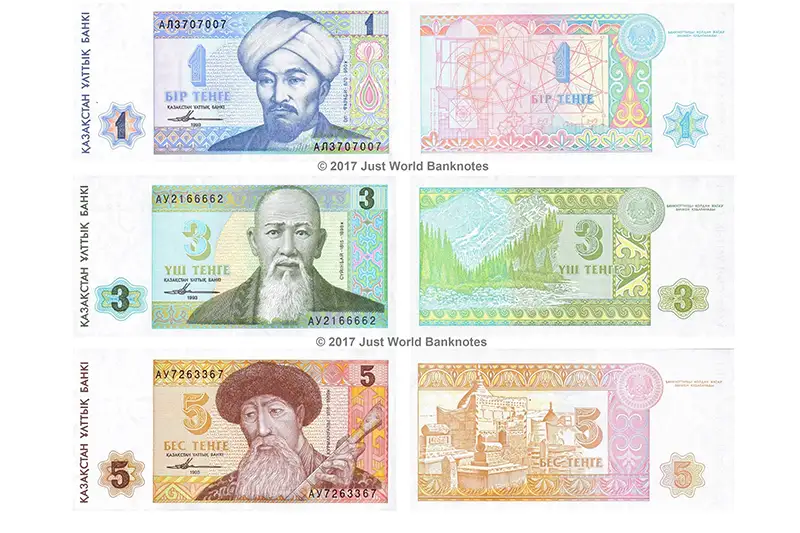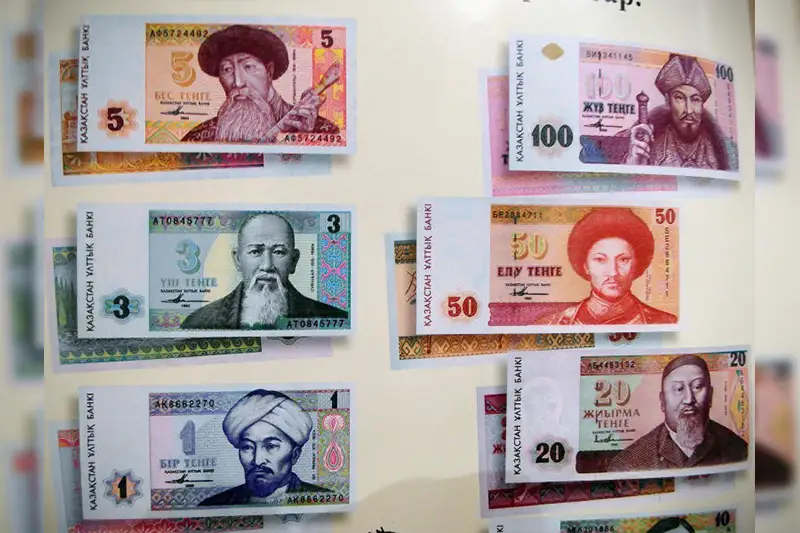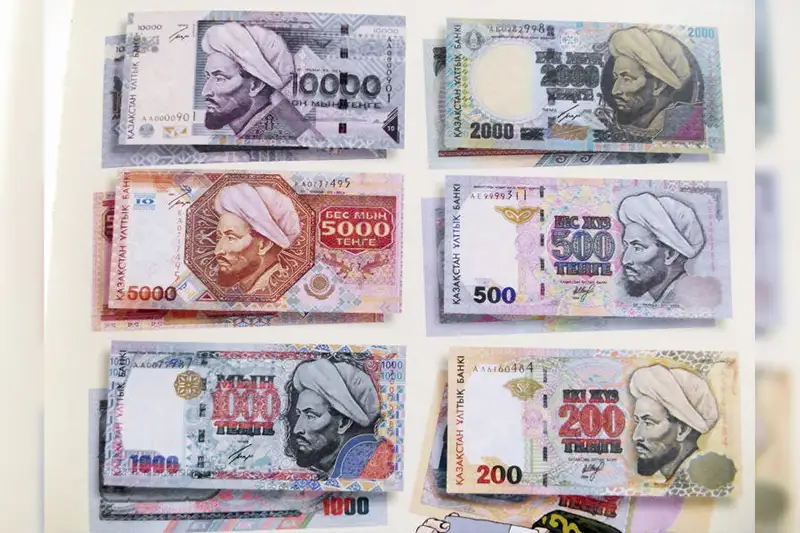Kazakhstani Tenge: A mean of payment and symbol of state sovereignty

In the early 1990s, in the context of gaining its sovereignty, Kazakhstan started to work hard on establishing its independent legal base. The country's financial sector was one of its top priorities. At that time the government adopted new laws 'On banks and banking activities' and 'On the National Bank of the Republic of Kazakhstan'. In 1993, a State Commission introducing the national currency was established.
The same year Kazakhstan's Parliament and the Government agreed on the name of the country's new currency unit: the tenge, which was the name of medieval Turkic small coins. The 'tanga' coin was first mentioned in historic documents dated 1361. Tamerlane, historically known as AmirTimur, a Turco-Mongol conqueror and a national hero of Central Asia used the term ‘tenge' for his empire's currency.
 In 1993, the first series of new banknotes in denominations of 1, 3,5.10,20, 50 and 100 tenges was printed with the assistance of Harrison & Sons (H&S), the British world-famous engraver and printer of banknotes. Later on, tenge was recognized as the UK's best export product while H&S received the Queen's award for export achievement.
In 1993, the first series of new banknotes in denominations of 1, 3,5.10,20, 50 and 100 tenges was printed with the assistance of Harrison & Sons (H&S), the British world-famous engraver and printer of banknotes. Later on, tenge was recognized as the UK's best export product while H&S received the Queen's award for export achievement.
 It took several airplanes to deliver the newly printed tenge banknotes from London to JambuI (currently the city of Taraz), the operation was carried out in the exceptional secrecy.
It took several airplanes to deliver the newly printed tenge banknotes from London to JambuI (currently the city of Taraz), the operation was carried out in the exceptional secrecy.
Before the formal launch of tenge, President Nazarbayev addressed the nation with clarification. The country-wide currency exchange operation began November 15, 1993, and was successfully implemented by November 20. Thus, the National Bank of Kazakhstan started to create the country's payment system from scratch and to develop programs for adopting the International Accounting Standards. In 1995, a tenge printing factory was opened in Kazakhstan. The Kazakhstani Mint, established in Ust-Kamenogorsk in 1998, has been striking coins in gold, silver, cupro¬nickel, brass-nickel, silver-tantalum, and German silver.
In 1995, a tenge printing factory was opened in Kazakhstan. The Kazakhstani Mint, established in Ust-Kamenogorsk in 1998, has been striking coins in gold, silver, cupro¬nickel, brass-nickel, silver-tantalum, and German silver.
 Since 2006, Kazakhstani Mint has been striking coins in silver coupled with tantalum, since 2018 - in nickel silver. Kazakhstani Mint has patents, especially for the tantalum coins. Along with the collection coins, the National Bank issues investment coins. They are manufactured from precious metals and are both an investment object and a means of payment. Lately, a demand on them has increased significantly.
Since 2006, Kazakhstani Mint has been striking coins in silver coupled with tantalum, since 2018 - in nickel silver. Kazakhstani Mint has patents, especially for the tantalum coins. Along with the collection coins, the National Bank issues investment coins. They are manufactured from precious metals and are both an investment object and a means of payment. Lately, a demand on them has increased significantly.
 Now Kazakhstani banknotes and coins are on demand among collectors; they are demonstrated at the international exhibitions and some of them are given international awards for the workmanship, design and innovative technologies. Coins from the series "Gold of nomads", "Petroglyphs of Kazakhstan", "Architectural and historical monuments", "Applied art", "Coins of old stamps", "Famous Mosques Around the World", "The great military leaders", "Fauna and flora of Kazakhstan" are very popular among numismatists.
Now Kazakhstani banknotes and coins are on demand among collectors; they are demonstrated at the international exhibitions and some of them are given international awards for the workmanship, design and innovative technologies. Coins from the series "Gold of nomads", "Petroglyphs of Kazakhstan", "Architectural and historical monuments", "Applied art", "Coins of old stamps", "Famous Mosques Around the World", "The great military leaders", "Fauna and flora of Kazakhstan" are very popular among numismatists.
Over the last quarter of a century, the National Bank of Kazakhstan issued several banknote series of tenge. This was related to the necessity of better protection of the domestic currency and the desire to reflect positive changes in the country's economy.
The first generation of tenge banknotes is the "Series of portraits". The second series of tenge named "Al-Farabi". The portrait of the scientist and philosopher was depicted on each banknote from 200 to 10,000 tenges. The design of the third generation of banknotes that was related to our nature, history, and architecture turned out to be very successful. Symbolic system of the "Baiterek" series represents Kazakhstani mentality, however, it is simple, imaginative and expressive: an open hand, the Caspian Sea and seagulls above it, notes of the Kazakhstani anthem, the Big Almaty Lake, N. Nazarbayev's signature. "Samruk", the fourth generation of banknotes, was issued recently and is in circulation with the previous series of banknotes, "Baiterek". The most famous banknote of this generation is the one worth of 20,000 tenges in rich blue and grey colors. In addition, it was recognized as the most beautiful banknote in the world.